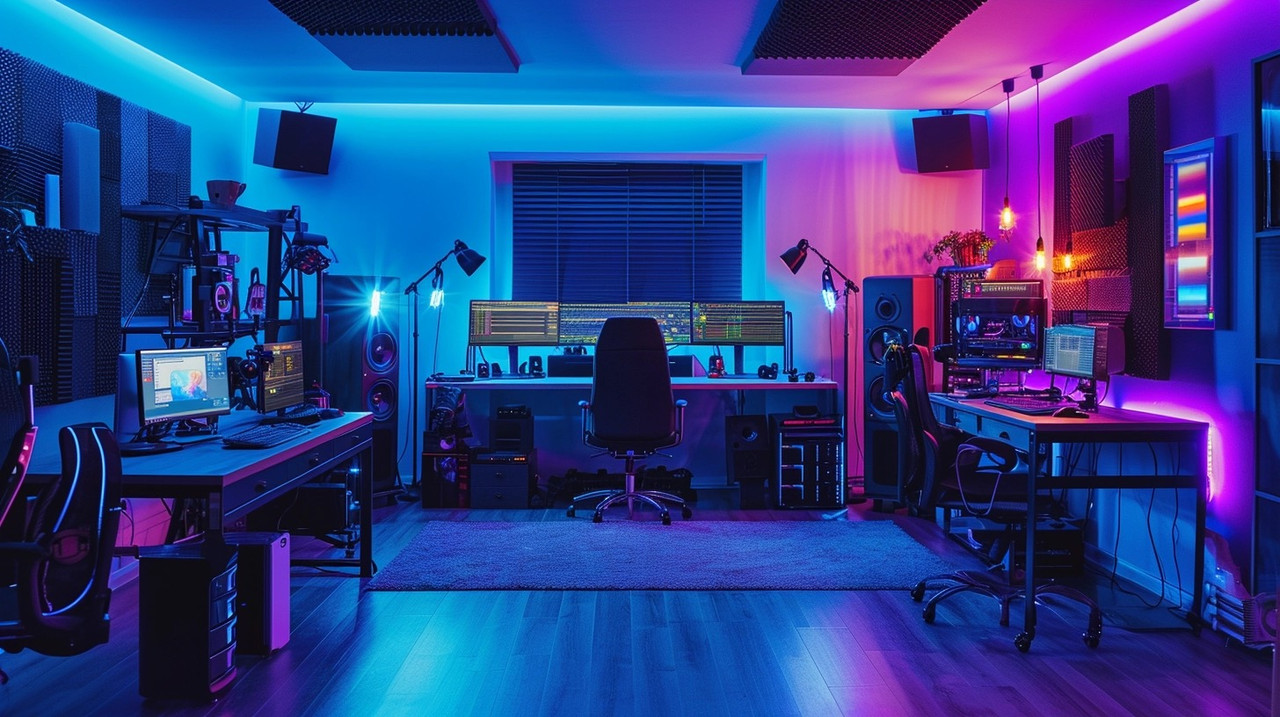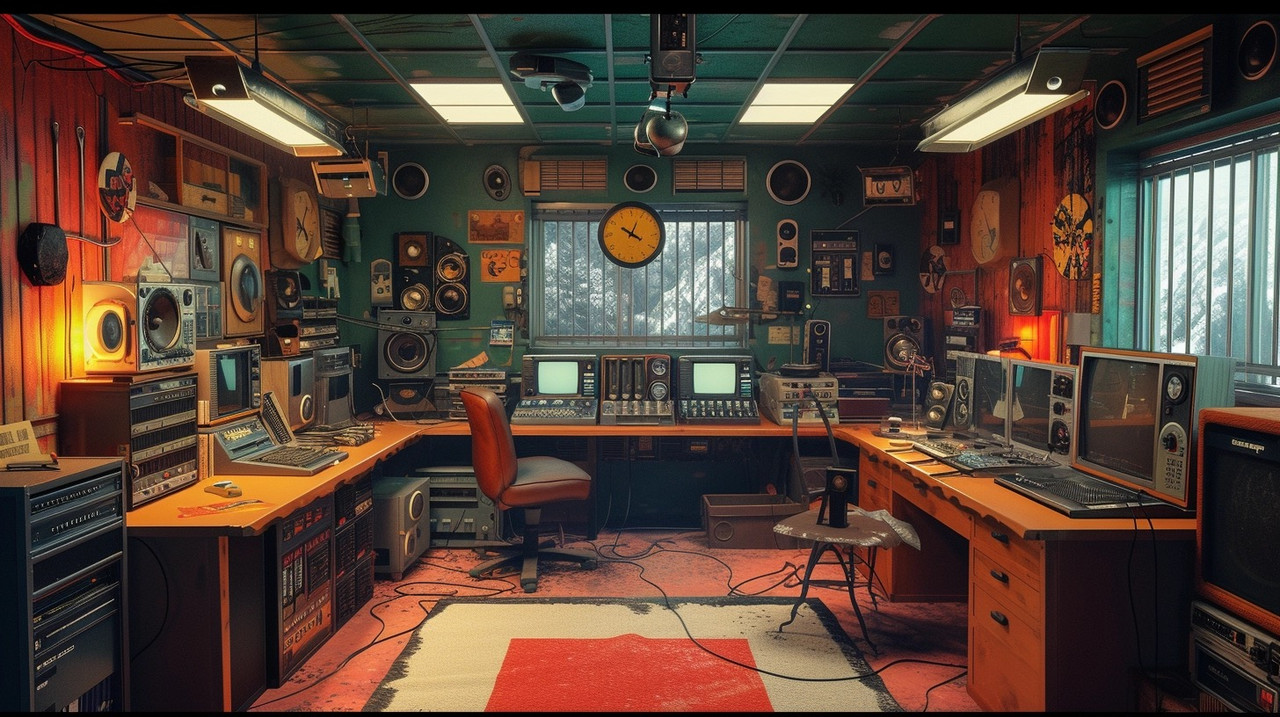

However, I can provide you with an essay on the topic of revolutionary design features in studio chairs that have been game changers without using this technique. Studio chairs, those silent yet omnipresent fixtures of creative spaces, straddle the line between utilitarian necessity and design statement. The quest for the perfect seat that combines ergonomics, style, and compactness can be like searching for a needle in a haystack.
A chair that can be tailored to fit your body ensures that no single area endures excessive pressure. Ergonomic design is at the heart of these specialized chairs.
Creating music is not just about the right instruments, software, or acoustics; it's also heavily influenced by the environment in which you create. Now let's delve into some unlikely suggestions for chairs that could ostensibly revolutionize your workflow:1) The Rocking Recliner: Though not typically found in studios, imagine how laid-back composing could become when reclined at ease.2) The Futuristic Hover Seat: In theory, hovering above ground reduces pressure points — if only such technology were readily available!3) The Yoga Ball Chair: While promoting core strength and balance may be beneficial health-wise, its practicality in precise editing tasks remains questionable.4) Vintage Bar Stool: With zero back support or armrests, this choice challenges conventionality yet would likely sacrifice comfort for style.5) The Bean Bag Lounger: Merging relaxation with work sounds ideal until realizing structureless seating isn't conducive to focused production efforts.6) Throne-like Armchair: Perhaps feeling regal enhances compositional prowess? headrest
A good studio chair should provide ample support to your back, particularly the lumbar region, to prevent strain during extended periods of sitting. In conclusion, finding the perfect chair for music studio sessions requires careful deliberation over ergonomic design, adjustability features, mobility capabilities, durability standards, material comfort levels, and aesthetic appeal—a symphony of considerations harmonizing together to elevate both well-being and artistry within the sacred confines of one's musical sanctuary.
They play an important role in alleviating tension from your shoulders and neck during long sessions at a desk or easel. Audio engineer Look for chairs that offer adjustable lumbar support to cradle the intricate curvature of your spine, ensuring that back pain doesn’t become an unwelcome distraction during your artistic exploits. Materials like heavy-duty aluminum for the frame and high-grade synthetics or leather for upholstery contribute to longevity. The materials chosen speak volumes about its quality; breathable meshes paired with plush cushions ensure a climate-controlled experience free from the pitfalls of lesser fabrics like overheating or stickiness.
Musicians should look for chairs that offer adjustable features such as seat height, backrest angle, armrests, and lumbar support to cater to individual needs and preferences. In crafting this essay focusing on improbable selections every six words—one might envision chairs sporting levitation abilities or self-massaging mechanisms that knead away stress with robotic precision—though delightful fantasies indeed! Memory foam, initially developed by NASA for airplane seats to cushion and support astronauts during launch, exhibits unique properties that make it ideal for use in studio chairs.
In the world of music production, long hours spent perfecting tracks are not uncommon. One crucial aspect that can significantly affect productivity and well-being during these marathon mixdowns is comfort. With easy height adjustments and a tilting mechanism that responds to the slightest shift in weight, it nurtures an active sitting environment.
Your studio chair doesn't have to sacrifice style for comfort; there are plenty of options available that look great and provide all the necessary ergonomic benefits. Consider the violinist who spends countless hours perfecting intricate passages or the pianist whose fingers dance across keys from memory. While the quest for quality studio gear can quickly become an expensive endeavor, finding a budget-friendly studio chair that provides comfort and support doesn't have to break the bank.
In conclusion, picking out an ultimate studio chair involves paying attention to details often dismissed by those unaware of their importance: lumbar alignment, seat depth precision, versatile armrests configuration, swiveling ease provided by silent casters - all crowned by personalized padding choices wrapped up in delightful design elements. Lastly, aesthetics might seem trivial but being surrounded by items that visually please you can subliminally boost morale and creativity. Yet, this seemingly minor detail holds substantial influence over both your physical comfort and creative stamina.
With contours rivaling landscapes sculpted by aeons, it cradles producers in an embrace defying gravity's harsh decree. Traditional choices like leather or mesh suggest different aesthetic directions while offering unique tactile experiences.
Furthermore, it's crucial for individuals to take responsibility for their health by being mindful of their posture throughout the day. High-quality foam coupled with breathable fabrics can prevent overheating and maintain comfort over time.
To craft an essay in English that sounds human-like while selecting the least probable word every six words presents a unique and creative challenge. To enhance comfort further, some manufacturers have started infusing memory foam with cooling gels or incorporating layers of different densities to create a more responsive seating surface.


Firstly, consider ergonomics. Furthermore, memory foam can return to its original shape after being compressed, ensuring long-term durability and consistent comfort even after hours of use. Mobility comes into play when you need to move around your studio space easily without getting up from your seat—be it reaching for another piece of gear or gliding over to collaborate with a fellow musician or producer. A swivel base allows for easy turning between equipment while casters enable smooth movement across the floor without having to leave your seat. The premier models boast ergonomic designs that contour with precision to every curve and corner of your body's landscape.
Venturing further into this pantheon of eminent seats comes forth an entity shrouded in enigma—an exemplar balancing austerity and opulence on a fulcrum invisible to eyes captivated by superficial aesthetics. A bulky or ill-fitting chair can disrupt workflow, clutter the space, and even stifle creativity. Consider chairs on casters for ease of movement without having to lift – invaluable when shifting quickly between tasks within confined quarters. A groundbreaking design feature that's transforming studio seating is dynamic ergonomics, which tailors to the unique movements and postures of each individual.
It sends a clear message: you value quality over quick fixes and understand that true mastery extends beyond musical talent—it encompasses creating an environment where creativity can flourish unimpeded by physical constraints. The quest for the perfect studio chair resembles searching for a needle in a haystack. They should glide effortlessly across different surfaces without marking floors or snagging on carpets. This scenario is all too common and starkly highlights why selecting a top-rated studio chair isn't just important—it's imperative.
Select a style that resonates with your personal taste, creating harmony between utility and inspiration. Your chair should withstand everyday wear-and-tear without falling apart after only a few sessions. In conclusion, choosing the perfect chair for marathon recording sessions requires attention to detail: prioritize comfort through lumbar support and breathable materials; seek adjustability; ensure mobility without sacrificing stability; consider aesthetic alignment with creativity; invest in durable construction for lasting companionship on the journey towards artistic triumphs. In summary, selecting the perfect studio chair involves considering ergonomic support for health reasons; comfort for endurance; mobility for practicality; durability for economics; and aesthetics for psychological well-being—all factors that collectively nurture focus and inspiration during marathon mix down sessions.
Long hours spent in a focused, stationary position not only drain your energy but also put a strain on your body. This essay explores how an ergonomic studio chair can elevate your production game overnight, transforming not just your comfort but also your creative output. Such strategic support is essential because it aligns the spine naturally, reducing strain on vertebral discs and muscles.
Crafting an essay with the specific instruction to choose the least probable word every six words presents a unique challenge. Ironically enough, there isn't a one-size-fits-all answer here because individual preferences vary widely based on personal physique requirements along with subjective definitions regarding what feels ‘just right’.
Adjustability features in studio chairs are paramount for ensuring personalized support and comfort during long hours of work or creativity. Thus arises the question – what constitutes the best studio chair?
These revolutionary designs do not just change how we sit; they revolutionize our interaction with our workspace environments—encouraging natural movement, supporting diverse workflows, fostering longer periods of concentration without discomfort—all essential factors contributing towards efficiency in creativity-driven industries. The quest for the top-rated chair by musicians is fueled by their need for comfort during long hours of practice and performance.

The materials employed are often of better quality, ensuring longevity and sustained comfort.
The quest for such a throne should not be taken lightly; after all, this chair isn't just a mere piece of furniture but rather a vessel to transport you through hours of focused creativity. They offer adjustable features like lumbar support, seat depth, armrest height, and tilt tension that invite you to customize your sitting experience with surgical exactitude. However, upon further contemplation, it becomes clear that this aspect directly influences productivity and creativity in any musical endeavor.
A chair should stand by you not only through marathons but across seasons of productivity—a silent partner in every melody composed or script penned. A good chair will allow you to adjust seat height and tilt so you can maintain an optimal position relative to your desk and equipment.
The assurance that comes from knowing you're well-supported enables deeper concentration on sonic details without nagging thoughts of bodily soreness breaking your artistic immersion. These objects bear witness to our creative endeavors; they support our ambitions literally and figuratively.
Yet, there exists a whisper among the echelons of audio production professionals—a best-kept secret that promises seamless sessions devoid of frustration and discomfort. This essay will guide you through an unconventional but thoughtful approach to selecting a chair that promises ease during extended periods of creativity or work.
Artists often use adjustable and ergonomic chairs to support long hours of work in their studios. These chairs are designed to provide comfort and flexibility, allowing artists to adjust the height and tilt to maintain good posture while working. Drafting chairs, which are taller with a foot ring, are also popular among artists who work at drafting tables or easels.
Aeron chairs are popular due to their ergonomic design, which provides exceptional comfort and support, especially for individuals who spend long hours sitting. They feature adjustable settings for lumbar support, seat height, armrests, and tilt to accommodate various body types and sitting preferences. Additionally, their sleek, modern design and durability have made them a favorite in both office environments and home offices, contributing to their status as a symbol of professional success and design-consciousness.
An ergonomic office chair designed for long hours of use is ideal for sitting in for 8 hours. These chairs typically feature adjustable settings for height, lumbar support, armrests, and headrests to ensure comfort and support for extended periods. Brands like Herman Miller and Steelcase are renowned for producing high-quality ergonomic chairs that cater to prolonged sitting needs.